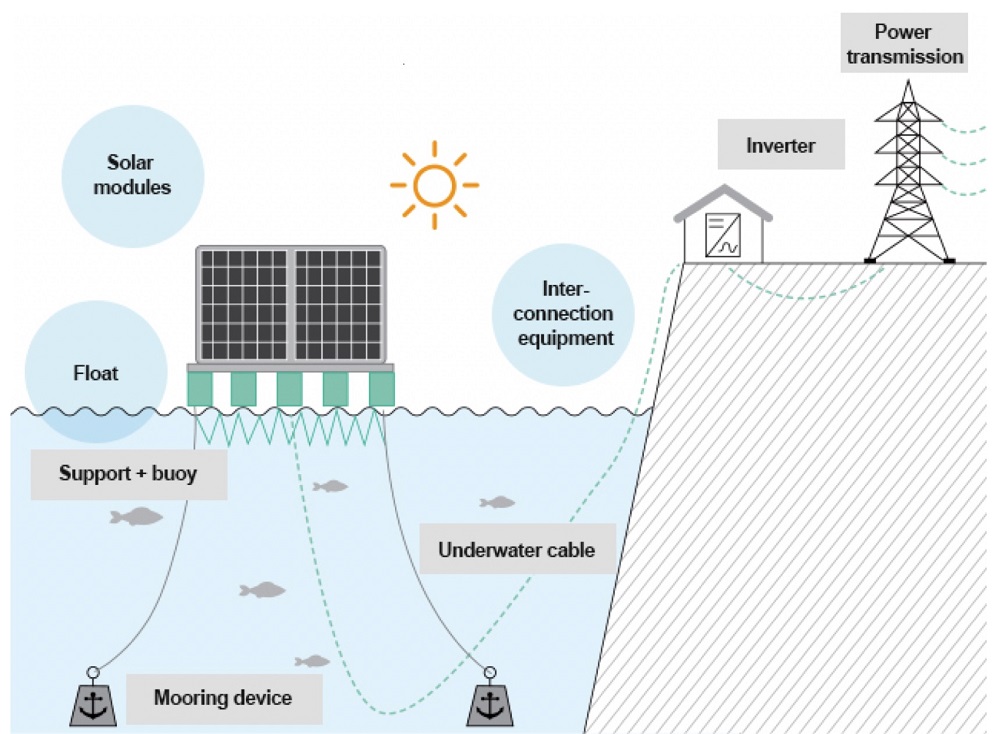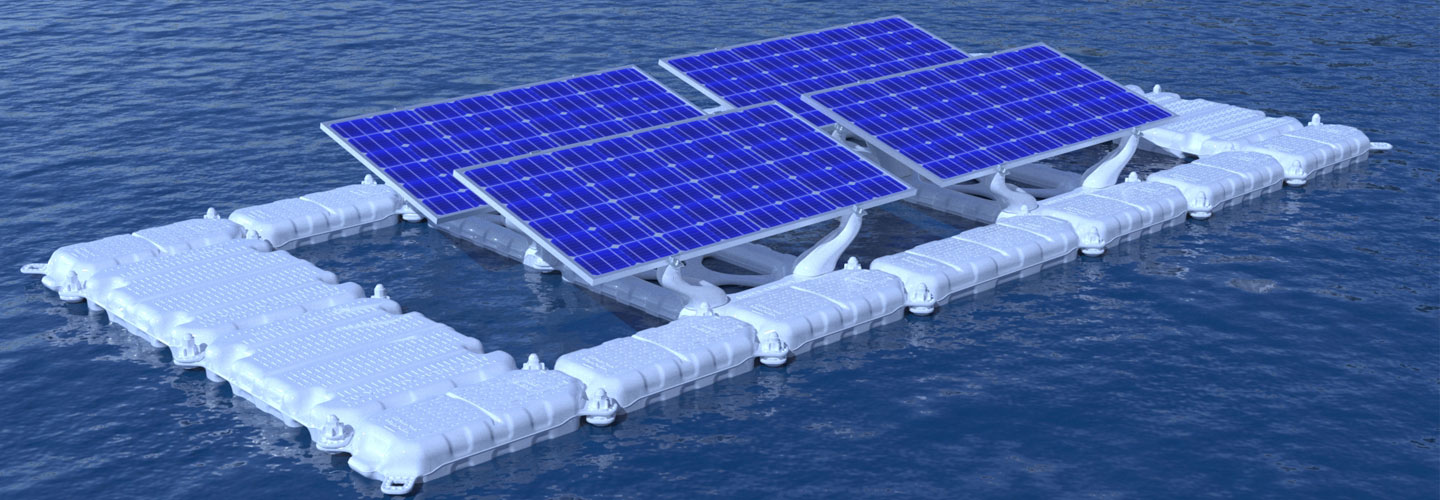How does Floating Solar Power System work?
Introduction
Floating solar farms gained traction in 2018, particularly in countries with high population density and with competing uses for limited available land. These also operate at high efficiency since installing the solar panels on water helps cool the equipment.
The Republic of Korea was among the first to pilot floating photovoltaic (PV) systems. State-owned Korea Water Resources Corporation (K-water) began testing a 2.4-kilowatt (kW) model in 2009 on the surface of Juam Dam reservoir in Suncheon, South Jeolla Province. In October 2012, it constructed a 500-kW commercial plant at the Hapcheon Dam in South Gyeongsang Province after it developed a 100-kW demonstration plant in Hapcheon Dam the year before. This was the world’s first commercial floating solar PV installation using the surface of a dam reservoir and the country’s first floating solar farm.
The country currently operates three commercial floating solar power facilities that aim to contribute toward increasing the share of renewables to 20% of the energy mix by 2030 from the current level of 7%.
What is a floating solar photovoltaic system?
It is an eco-friendly method of generating electric power that combines marine technology and renewable energy technology. Solar modules are made to float on the surface of water, such as a dam or a reservoir. Electricity is sent through underwater cables to a transmission tower.
Figure 1: Floating PV Generation Concept

Source: K-Water
What are the benefits of a floating PV system?
- Promotes land-use efficiency. As the floating PV energy systems are set up on water, the land can be used for other purposes. It requires no construction on land or conversion of forest and farmlands for solar power facilities.
- Provides high-energy yield. The increased energy generation is due to the natural cooling effect of the water, which reduces rises in temperature of the solar modules.
- Saves water resources. It reduces the evaporation of water in the reservoir since the floating PV system blocks the sunlight.
- Uses an eco-friendly system. Natural fish farms thrive under the platform.
Four environmental impact analyses by the Korea Environmental Policy and Evaluation Institute (KEI) from 2011 to 2019, showed that the floating PV facilities caused no harm to the environment, developed a ground for fish spawning, increased aquatic plants, and reduced algae. Also, as of 2018, the floating solar farms in the country has reduced the amount of carbon emissions by 52,414 tons.
What are its features?
A floating solar power plant is composed of the solar module, buoyancy body, and anti-rust material, which includes the vertical frame and horizontal frames, inspection footrest, and module mount assembly.
The solar module should be highly resistant to humidity, lead-free, dust-proof, and protected against the effects of temporary jets of water, and it should have passed the drinking water test. Floating PV Mounting System is applied to solar pv power plant installation on the water. Adopting HDPE material, it should pass the Hunt Water Absorption Test, Anti-Aging Test, Anti-UV Test etc. Moreover, it can bear the pulling force that is much higher than other products. Adopting new module design in floater and main floater, it can realize the array of double row in the same facing or in symmetrical facing, which can increase the efficiency of solar power generation and installation capacity, be easily installed, and save the cost. and its lifetime has more than 25 years.

Figure 2: Floating PV Plant Components
SunEvo Solar Floating System